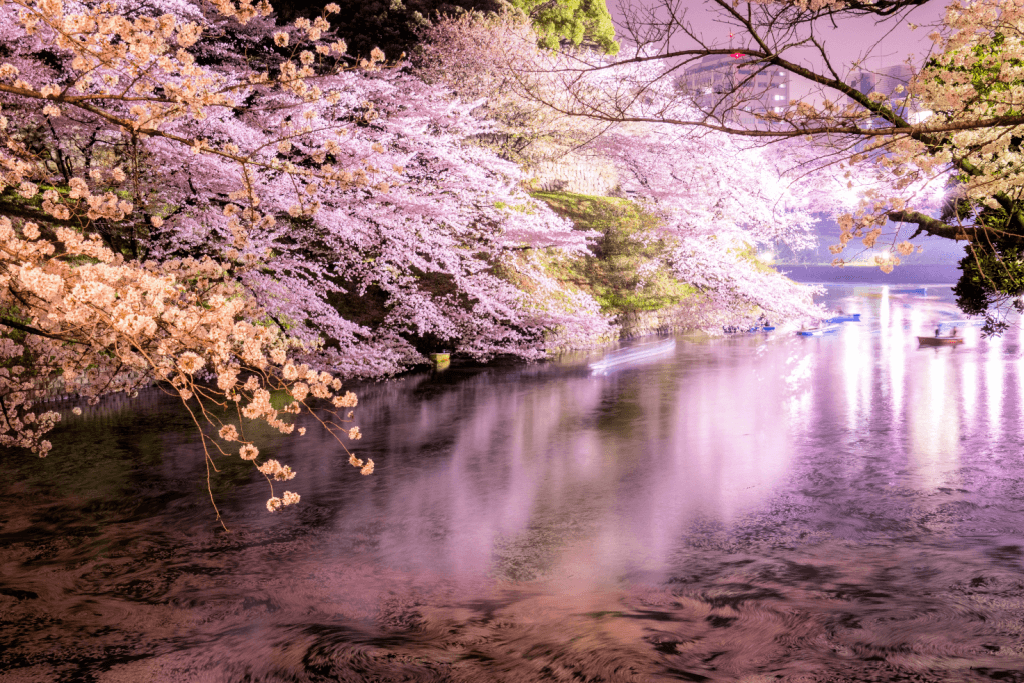These incredible cherry trees have existed for centuries in places like Morioka, Japan. They burst into beautiful pink and white flowers every spring, making the countryside magical. These trees are more than just pretty; they hold stories from long ago. Let’s look at these trees, which tell stories from the past.
Table of Contents
ToggleIshiwarizakura (Morioka Prefecture)
The Ishiwarizakura, or Rock-Breaking Cherry Tree, is a Morioka, Iwate Prefecture treasure. It’s a 400-year-old cherry tree that grows from solid rock, blooming in mid-April or early May. It’s among the first to bloom in the city, about 10 meters tall, with a base circumference of 4.3 meters.
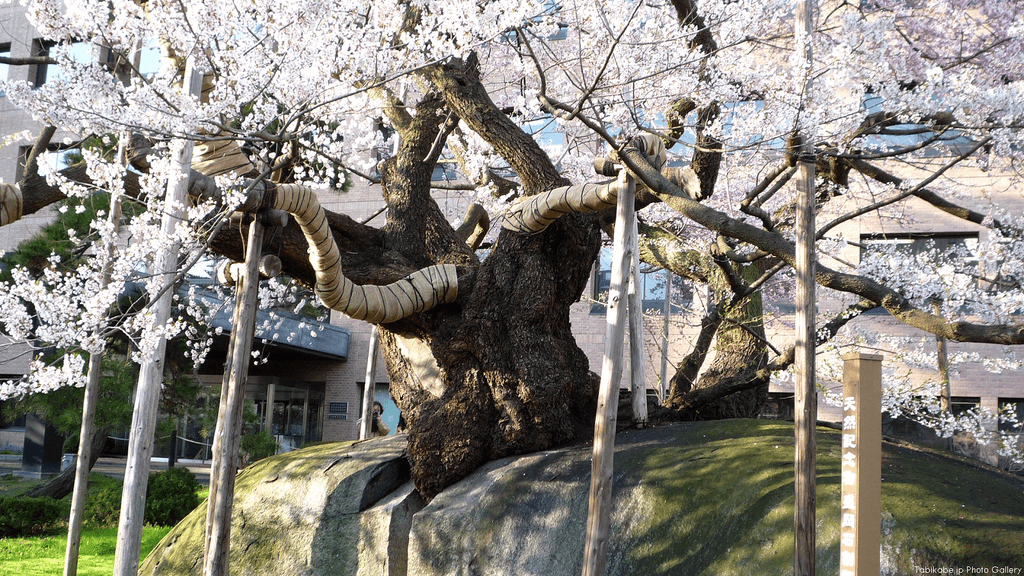
The tree is famous because it signals spring’s arrival. Designated a Natural Treasure of Japan in 1923, this tree is not just beautiful; it holds cultural and historical importance, especially in Morioka. Thriving in a harsh environment, it’s a must-see for nature and history lovers.
Usuzumizakura (Gifu Prefecture)
The Usuzumizakura, or Pale Grey Ink Cherry Blossom, is a fantastic cherry tree in Neo Village, Gifu Prefecture. It’s over 380 years old and stands tall at 16 meters. This tree is unique because its buds are pink before opening, then turn completely white. As a result, they resemble pale grey ink when in full bloom.
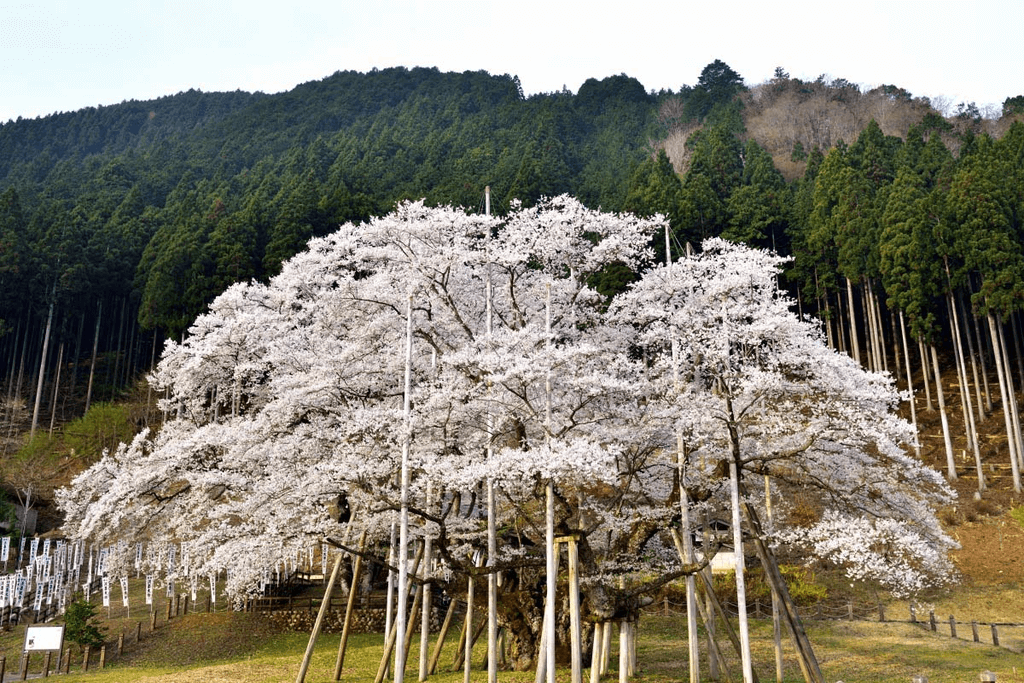
People in Gifu love this tree as a symbol of spring. During hanami season, many visitors come to see its beautiful blossoms. Its age and how its flowers change color also makes it an essential natural treasure. It attracts people from all around to experience its stunning beauty. Not to mention, it’s surrounded by lovely scenery in Neo Village, making it a peaceful spot to enjoy the fleeting beauty of cherry blossoms.
Are you looking for amazing snacks to enjoy while viewing legendary sakura trees? Check out Sakuraco! Sakuraco delivers traditional Japanese snacks, teas, sweets, and snacks from Japan to your door every month so that you can enjoy Japan’s taste anywhere!
Daigozakura (Okayama Prefecture)
The Daigozakura, an ancient cherry blossom tree in northwestern Okayama Prefecture, Japan, is over 1,000 years old, undoubtedly making it a unique symbol of nature and culture. Sitting on a hill in the countryside, the tree becomes a beautiful sight with delicate flowers in full bloom around April each year.
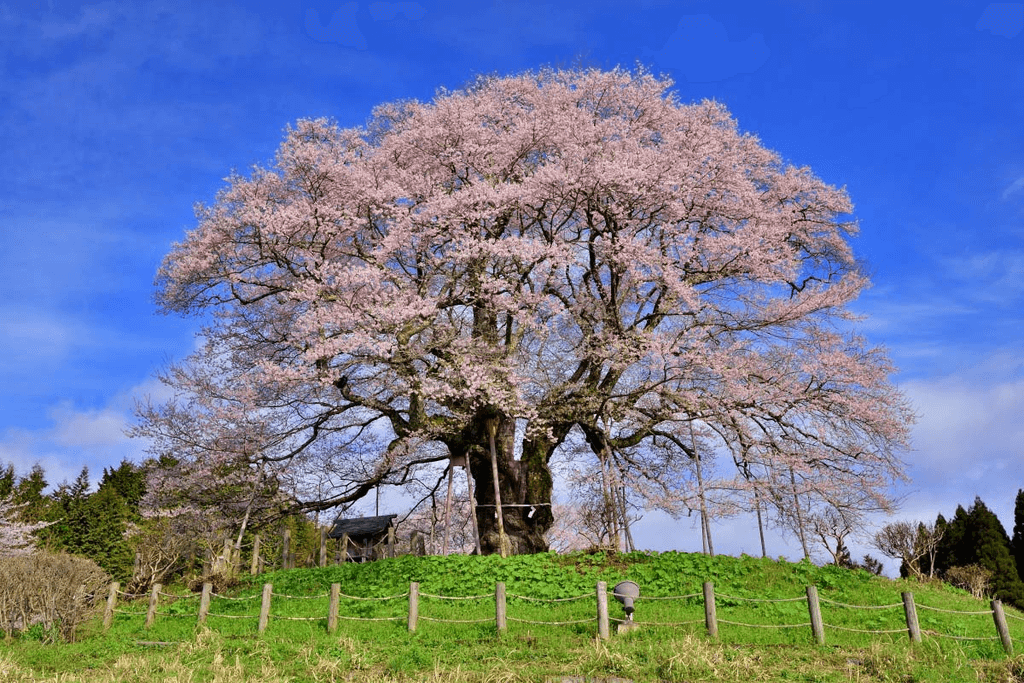
At night, when the flowers are half open, it’s lit up, offering a magical viewing experience. Despite being popular, the tree’s remote location allows visitors to appreciate its beauty in a serene environment. It’s a must-see for those exploring Japan’s rich natural and cultural history.
Miharu Takizakura (Fukushima Prefecture)
The Miharu Takizakura, or Waterfall Cherry Tree of Miharu, is an excellent natural wonder in Miharu, Fukushima, northern Japan. Moreover, this ancient weeping higan cherry tree is believed to be over 1,000 years old, making it one of Japan’s most cherished cherry trees.
Its name, “Takizakura,” meaning “waterfall cherry tree” in Japanese, comes from its vast, cascading branches that stretch over 20 meters. It was recognized as one of Japan’s five great cherry trees and declared a national treasure in 1922.
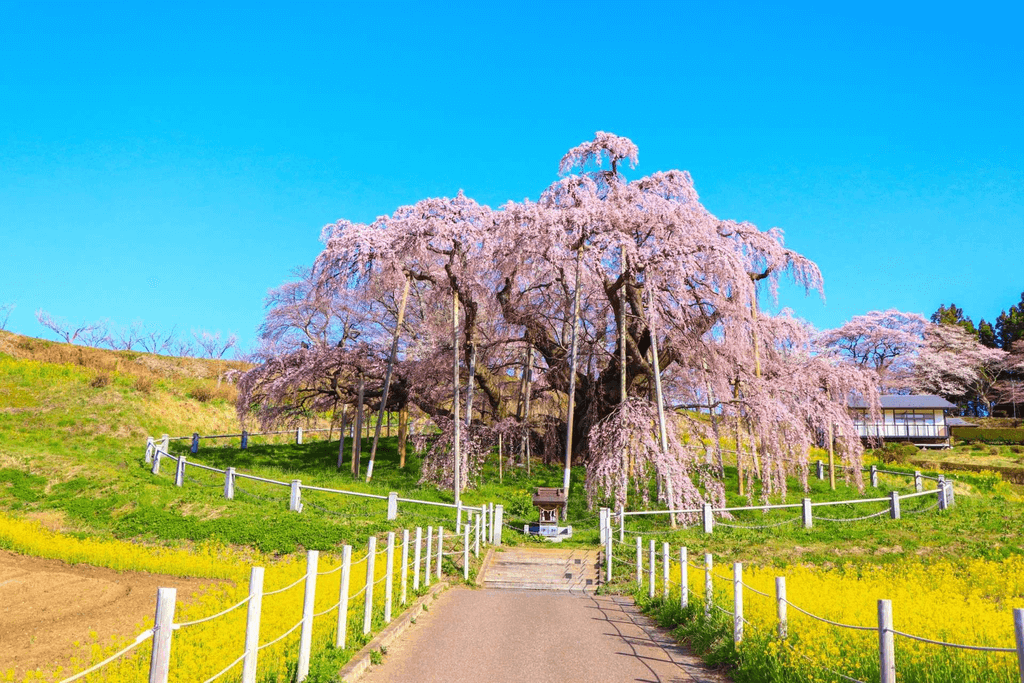
Every April, it puts on a stunning show of light pink flowers, attracting hundreds of thousands of visitors and marking the arrival of spring. Located in a quiet, rural place, the Miharu Takizakura provides a peaceful setting in which to enjoy its blossoms.
Despite its popularity, careful management of visitors helps protect the tree’s natural surroundings. Visiting this tree is a great way to explore Japan’s rich natural and cultural history, and its status as a national treasure highlights its importance as a symbol of enduring beauty and resilience.
Jindaizakura (Yamanashi Prefecture)
The Jindaizakura, or Jindai Cherry Tree, is an incredible natural treasure at the Jisso-ji Temple in the highlands of Yamanashi’s Hokuto region. Generally estimated to be between 1,800 and 2,000 years old and might be the world’s oldest cherry tree.
Standing at about 10.3 meters tall and 11.8 meters wide at the trunk, it’s one of the “Three Great Sakura Trees” of Japan. According to legend, the warrior prince Yamato Takeru planted the tree, linked to the priest Nichiren, undoubtedly adding to its cultural and historical importance.
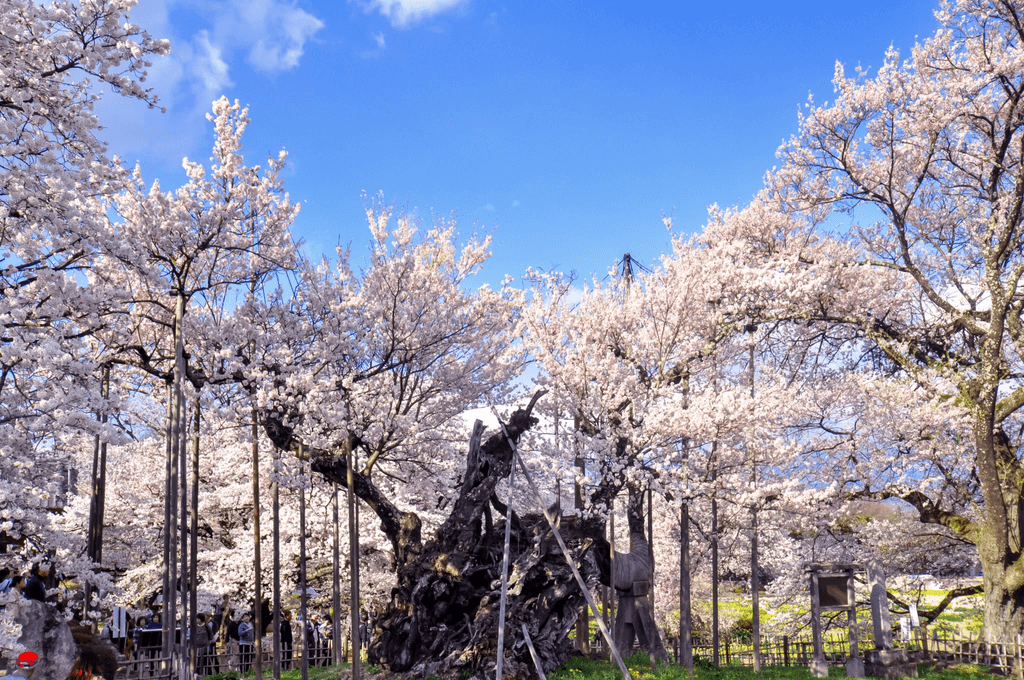
The Jindaizakura’s enduring beauty and connection to Japanese history make it a must-see, especially during the hanami season in April. The tree also symbolizes longevity and resilience, attracting visitors from far and wide.
Its association with historical figures and its role as a living link to Japan’s ancient past make it a cherished local treasure and a source of pride for the Yamanashi community. Overall, the Jindaizakura is an opportunity to explore the rich natural and cultural heritage of Japan.
What makes these cherry trees unique in places like Morioka?
These cherry trees are unique because they’ve been around for hundreds or even thousands of years, and people have many stories and traditions about them. So, seeing these fantastic trees isn’t just about looking at pretty flowers—it’s like stepping back in time and learning about Japan’s extraordinary history and culture. Have you ever seen these trees before? Let us know in the comment below!


